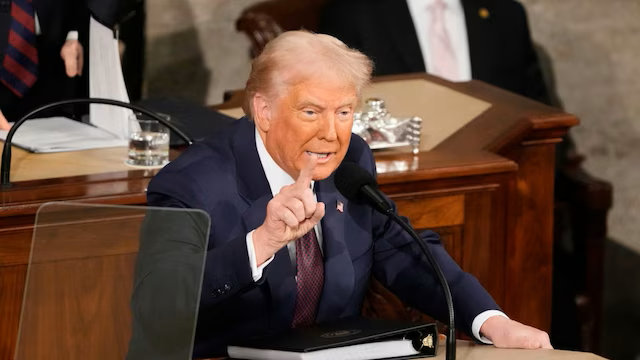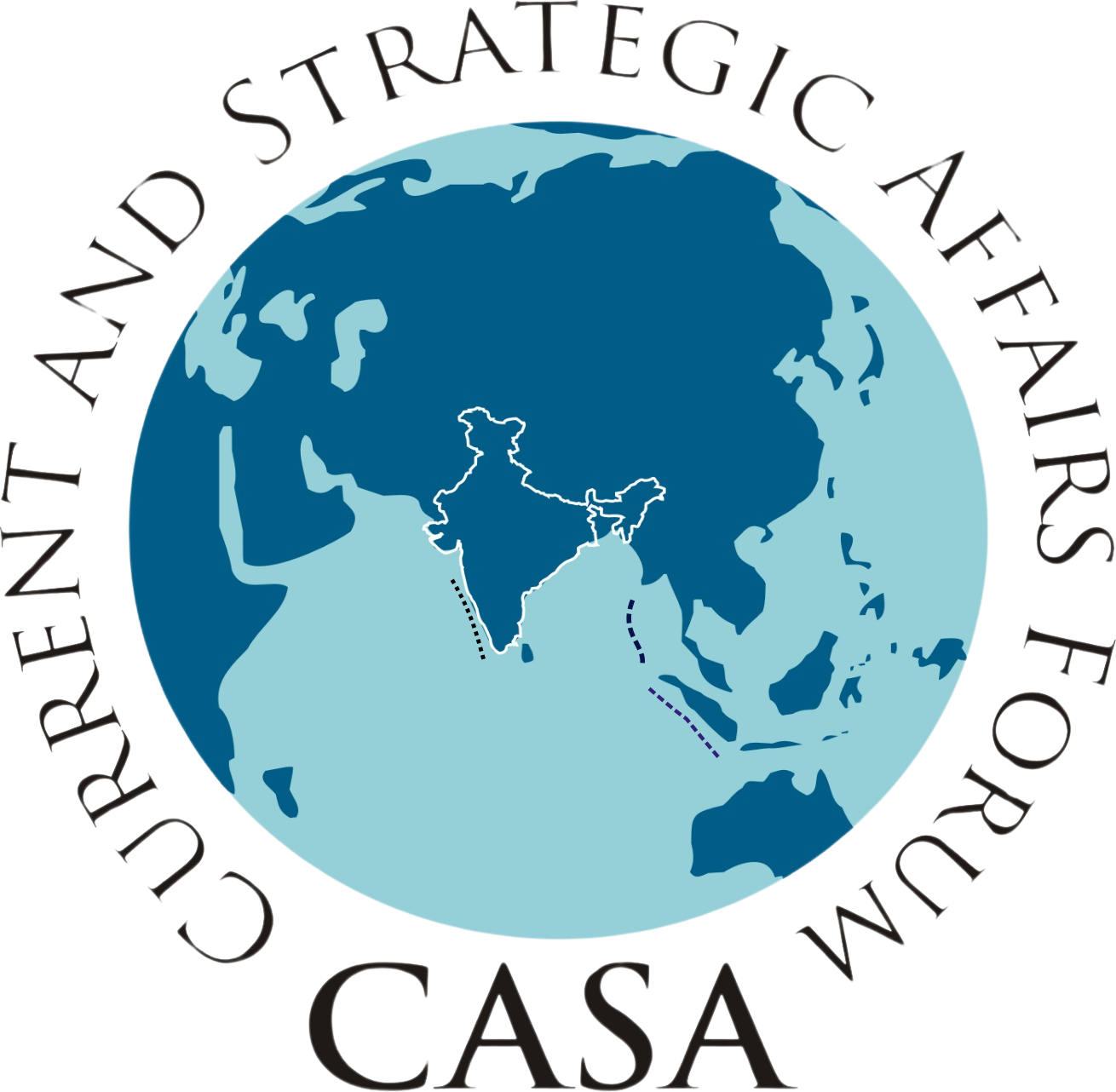Opinion | Trump’s America: Threats, Tariffs, And A New World Order
- April 1, 2025
- Posted by: Maj Gen Jagatbir Singh
- Category: US

The message is clear: if you want access to US markets, you must be willing to strike what President Trump considers a fair deal, whether in trade, economics, or national security
INTRODUCTION
Wars were easy to define but now, most countries do not know when they are at war, and with whom they are engaging in conflict. This is because kinetic means is no longer the dominant tool in imposing a nation’s will. Ever since US President Donald Trump returned to power, this has been even more evident. He has not distinguished between friends and foes as he concentrates on reshaping the world, and is no longer willing to underwrite the expenses.
related stories
- Is US Economy Heading For A Recession Under Trump? Why Tariffs Could Be The Key Factor | Explained
- Trump Pulls Back On 50% Tariffs Threat To Canada After Ontario Suspends Electricity Price Hikes
- ‘End Chaos’ Trump Walks Back On 50% Canada Metal Tariffs After Ontario Halts Power Surcharge | Trade
- US President Donald Trump Orders Clean Up Of Federal Buildings In Washington D.C. | PM Modi | News18
The policy shifts include territorial claims and economic threats. He has expressed a desire to make Canada the 51st state, annexe Greenland and the Panama Canal, and bring the Gaza Strip under direct American control. Additionally, he has cut off supplies to Ukraine and held up a mirror to Europe regarding the US underwriting their security bill. He has also expanded his trade offensive against China, Canada, and Mexico.
A HISTORICAL PRECEDENCE
While there may be a sense of alarm, the fact remains that during the Cold War, the US frequently resorted to economic coercion against its allies. While previous administrations differed from Trump in tone, the underlying message of the threats was often similar: follow US policy or face serious economic consequences.
advertisement
In 1948, for example, the Truman administration threatened to suspend the Marshall Plan for the Netherlands unless it abandoned its counterinsurgency against the Indonesian nationalist movement. The US believed the Indonesian nationalists could be counted on as allies in the Cold War and therefore threatened to cut off aid, ultimately forcing the Dutch to grant Indonesia independence within a year.
The Suez Crisis of 1956 once again demonstrated strong US economic pressure. After France, Israel, and the UK invaded Egypt, President Eisenhower made it clear that the US would no longer support Britain’s postwar economy unless it halted its attack. He pointedly told British Prime Minister Anthony Eden, “If you don’t get out of Port Said tomorrow, I’ll cause a run on the pound and drive it down to zero.” Eden was in no position to resist and promptly relented. Similar threats against Paris and Tel Aviv also secured the withdrawal of French and Israeli forces. The Suez Crisis marked the end of British imperial ambitions in West Asia.
You May Like
Benefits of PLC and SCADA IntegrationTank Level PlcRead More
In the 1970s, when South Korean President Park Chung Hee pursued a nuclear weapons programme, the Ford administration used threats to freeze US government lending and reconsider its security relationship with South Korea. As a result, France ultimately decided not to deliver a reprocessing facility to South Korea in 1975.
During his first term, Trump imposed sanctions on Iran’s and Venezuela’s oil exports. These had a crippling economic effect but failed to produce any political shifts. Sanctions were also imposed on Iran, North Korea, and Russia in 2017, and the US launched an economic offensive against Huawei, ZTE, and other Chinese tech giants. Trump’s tariff war with China resulted in a trade deal in 2020, but China did not meet its commitments to increase purchases of American goods. Eight years later, Iran, North Korea, and Russia have only drawn closer together, while Chinese tech firms, led by Huawei, have grown stronger.
advertisement
In 2019, the US used sanctions to pressure Turkey, a fellow NATO member, into reining in its proxies fighting US-backed Kurdish forces in Syria. The following year, it again imposed economic penalties on Turkey for purchasing Russian S-400 anti-aircraft missiles.
GAZA CEASEFIRE
On 5 March, President Donald Trump threatened further destruction of Gaza if all remaining hostages were not released and issued an ultimatum to Hamas. “Release all of the hostages now, not later, and immediately return all of the dead bodies of the people you murdered, or it is over for you.”
Trump also warned of repercussions for Gaza as a whole, where virtually the entire population has been displaced. “To the people of Gaza: A beautiful future awaits, but not if you hold hostages. If you do, you are dead!”
His comments followed Israeli Prime Minister Benjamin Netanyahu’s warning of “consequences that you cannot imagine” if Hamas did not hand over the remaining hostages seized in the 7 October attack.
advertisement
Yet, at the same time, the US confirmed unprecedented indirect talks with Hamas—designated by Washington as a terrorist group—focused on securing the release of the five American hostages in Gaza. The talks were held in Doha.
UKRAINE AND EUROPE
There have been recurring strains in the US-Ukrainian relationship under both Trump administrations. The recent Oval Office blow-up between the two presidents is only the latest example. However, such tensions need not derail a push for peace, which is what most people across the globe want.
How the war is resolved, and specifically on what terms, is of utmost importance for Ukraine, Russia, and the future of Europe. The outcome is also significant for the US, as the Trump administration cannot afford to be burdened in the same way the Biden administration was by its mishandling of the US troop withdrawal from Afghanistan.
Ending the war will also require increasing economic pressure on Russia—to incentivise it to wind down the conflict—while holding out the prospect of improved economic relations if a negotiated peace agreement is reached. This is not something easy to calibrate. The fact remains that stopping a war is far more difficult than starting one.
When President Trump told President Zelenskyy, “You don’t have the cards right now,” it was a reminder of the strategic balance of power, as articulated by Thucydides in the Melian Dialogue: “The strong do what they can, and the weak suffer what they must.”
A crucial point made in the Oval Office was President Trump’s warning to President Zelenskyy: “You are gambling with World War III.”
Looking back, the Iraq War bears some similarities to the Ukrainian conflict. April Glaspie did to Saddam Hussein what, years later, Victoria Nuland would do to Zelenskyy. Both countries were led into ruinous wars and then presented with the bill.
If Trump’s actions in the war in Ukraine prevent further loss of human lives and also help undermine the transatlantic military alliance of old colonial powers, the rest of the world has reason to celebrate.
The reality remains that Europe’s ambition to expand NATO has never been matched by its defence spending and has always relied on the US footing a big part of the bill. So far, US leaders have shouldered this burden through their extraordinary defence budget. But Trump says no more.
A ‘coalition of the willing’ is being hurriedly assembled. Keir Starmer and Emmanuel Macron insist they want to put ‘boots on the ground’ in Ukraine, ostensibly to strengthen Zelenskyy’s position in the event of a ceasefire. Most analysts see this as a red flag for Putin. After all, Russia waded into Ukraine precisely to prevent NATO members from reaching its borders. But European leaders know that Russia will never accept them as neighbours.
TARIFFS – THE NEW TOOL OF WAR
Tariffs are another visible part of this new strategic approach. By imposing tariffs on countries that do not align closely with Washington’s priorities, the US has effectively raised the price of entering the American market. If countries want a lower price, then they must also lower the barriers that prevent American businesses from fairly competing in and taking advantage of market opportunities on their own turf. And if this is not possible, then other concessions in the strategic and national security domains must be made.
Some recent cases amplify this new approach. The US is pressuring Mexico to tighten border security by threatening tariffs if American demands are not met. Another example is the much-discussed critical minerals deal with Ukraine, where the US is seeking key resources in exchange for continued strategic support. The bottom line being a world where America extracts tangible geopolitical or economic benefits in return for the privilege of trading with and being integrated into its market.
The message is clear: if you want access to US markets, you must be willing to strike what President Trump considers a fair deal, whether in trade, economics, or national security.
The size of the US market gives commercial threats particular potency, especially against countries that are heavily dependent on the US for trade. Take Denmark, for instance. The popularity of the diabetes and weight-loss drugs Ozempic and Wegovy has turned the Danish pharmaceutical company Novo Nordisk into the most valuable company in the European Union. Novo Nordisk’s annual sales in the US market are now growing at 30 per cent annually; its total net sales of $42 billion amount to ten per cent of Denmark’s GDP, making Denmark vulnerable to economic blackmail regarding Greenland.
On the flip side, tariffs can be detrimental unless domestic production is cheaper than the goods imported with enhanced tariffs. Otherwise, they will only drive up inflation, with consumers ultimately footing the bill.
Apart from countries, institutions such as the World Bank and the IMF may also be targeted. Whether this would be an effective strategy remains to be seen, but the reality is that institutions, bureaucracies, and personnel that continue to operate as per the old rules of American engagement will all be jolted into conforming to the constantly changing dynamics.
CONCLUSION
There is no doubt that a major shift is taking place, where the free movement of trade, capital, and people was once seen as a positive. Additionally, the prevailing view was that American influence largely stemmed from the provision of goods. The Trump administration does not subscribe to these beliefs; instead, it views access to American markets, capital, and security as a point of leverage through which the US can and must demand strategic and economic concessions from both friends and foes.
According to the current dispensation, adversaries and allies alike have been taking advantage of the US for far too long. As Bob Dylan famously said, ‘The Times They Are a-Changin’. America has now decided that it must change its strategic approach and adopt a far more transactional and ruthless stance in its dealings.
The Trump administration is actively reshaping the post-Cold War world order. The foundational belief driving this shift is that access to the US market and the broader international system aligned with America is a privilege, not a right. The fact remains that the tools of waging war are becoming increasingly difficult to define.
top videos
‘End Chaos’ Trump Walks Back On 50% Canada Metal Tariffs After Ontario Halts Power Surcharge | Trade
The author is an Army veteran. Views expressed in the above piece are personal and solely that of the author.
